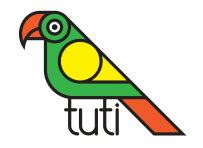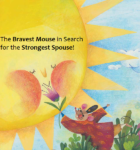Beatriz Montero addresses the question “How do we live with stories?” in her book “The Secrets of Storytelling” by suggesting that we do so through reminiscing on memories rather than merely retaining them in our minds. Some stories possess a subject matter that easily evokes our personal experiences. Mehdi Rajabi’s Junk Food Jane, illustrated by Maryam Tahmasebi, serves as an example.
It is hard to find a child who doesn’t have memories of indulging in food and overeating, and harder to find one who has not been scolded by adults for this tendency and indulgence.
The story of Junk Food Jane is a recollection for everyone, reminding adults of their childhood memories as well. Overindulgence in junk food is common between children and adults. It is an ongoing memory for the former and for the latter, it serves as a reminder of a past they have outgrown.
Throughout the history of eating junk food, the names and varieties have constantly evolved. In this story, Jane’s junk food names are genuinely distinctive. The snacks featured are inventive combinations, born from creative wordplay, and cannot be found in any store. An example is “Dommies,” a fusion of donuts and gummies, or “Roll-upsicles,” a blend of fruit roll-ups and popsicles. The story is filled with numerous other snack combinations, which you can discover as you read on.
According to the author, the story of Junk Food Jane is perfect for children who are fed up with constant commands from adults, “Eat this!” and “Don’t eat that!”. But in this story, two voices or in Wittgenstein terms, two world-pictures exist: One world-picture of childhood and another of adulthood. The childhood world and its inclination towards eating junk food, along with the world of adulthood and its warnings and restrictions.
Throughout the story, both world-pictures undergo transformations in a way that the reader begins the story with one world-picture but concludes with another.
Much of the narrative explores this contradiction, and towards the end, the two perspectives meet without the child yielding to adult demands. Instead, Jane and the reader experience the grown-ups’ warnings by excessive junk food consumption and facing the potential consequences wholeheartedly not through bitterness but through play which is the nature of a child’s life and through imagination which is a child’s thinking tool.
While an adult’s authoritative voice is present in the story, it remains neutral—as though acknowledging the futility of advice and warnings. Therefore, the story can be an enlightening read for adults who tend to be controlling. However, Nietzsche’s quote implies that some adults with lots of junk food memories might still resist the lesson: “I have done that,’ says my memory. ‘I cannot have done that’- says my pride and remains unshakable. Finally, memory yields.”
Yashar Hodaei, writer and researcher of children’s literature


